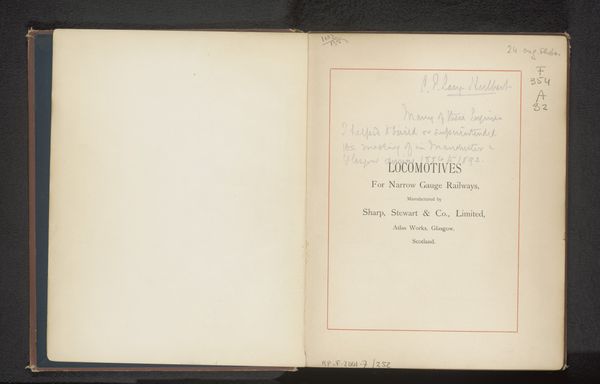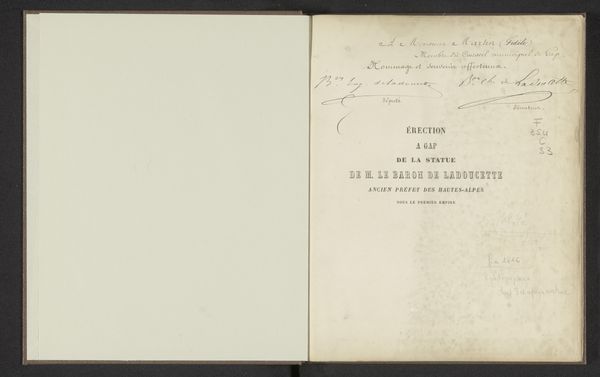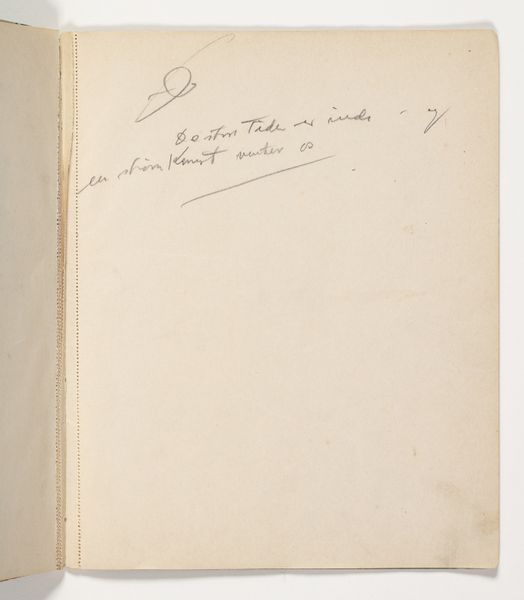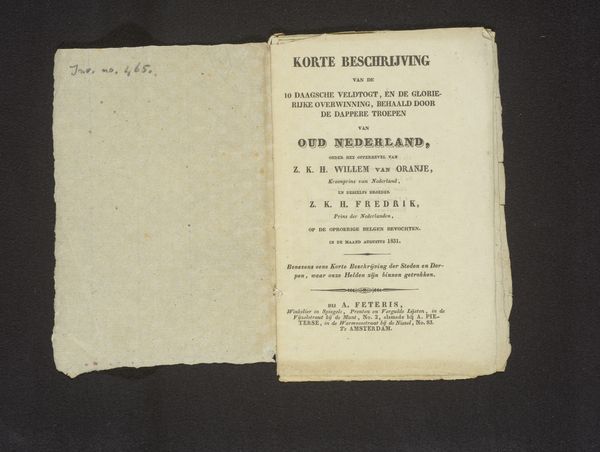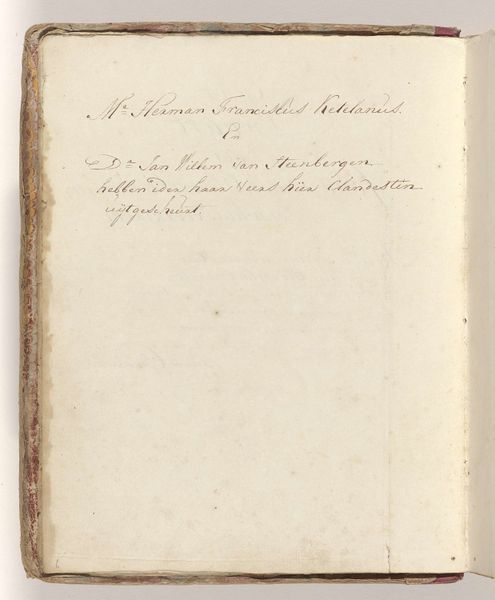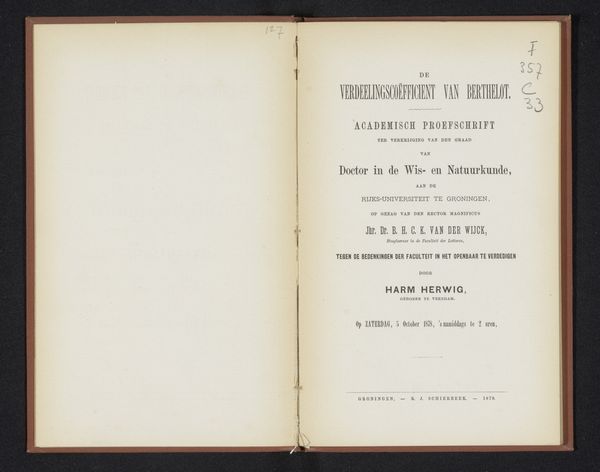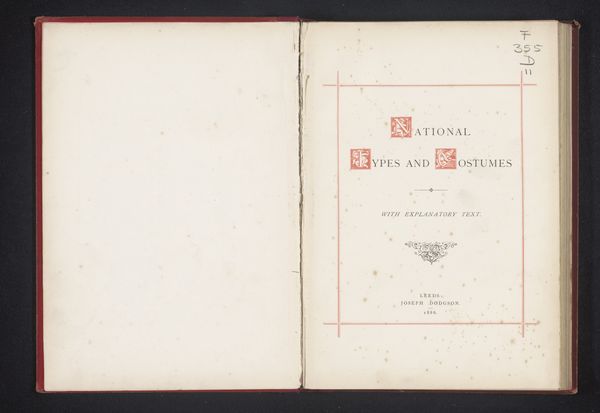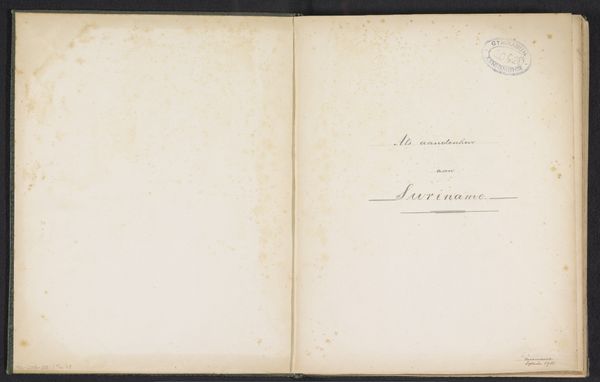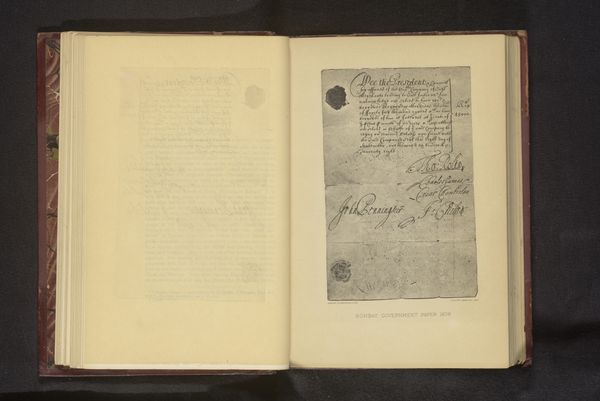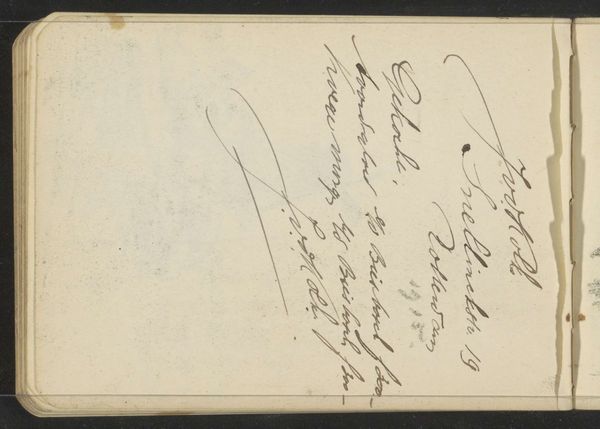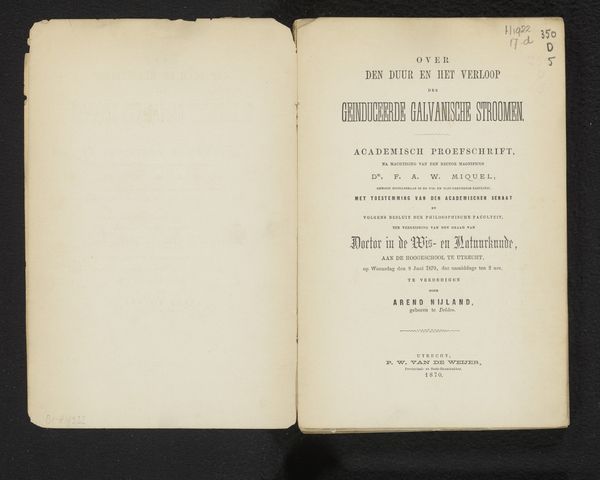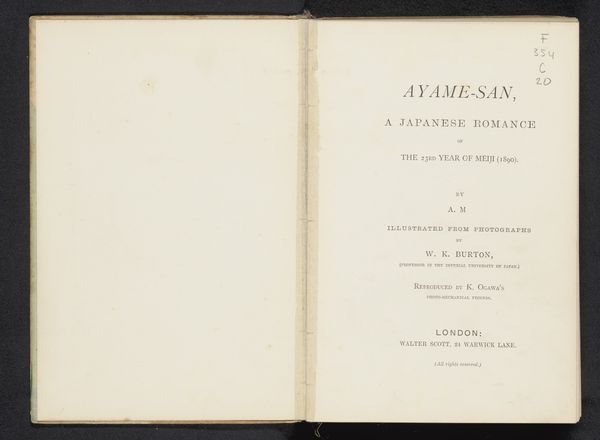![Dagboksanteckningar under en resa i Algeriet, Tunis och Sicilien föråret 1891 / [J.L.H. = Johan Lorentz Hafström] by Johan Lorentz Hafström](/_next/image?url=https%3A%2F%2Fd2w8kbdekdi1gv.cloudfront.net%2FeyJidWNrZXQiOiAiYXJ0ZXJhLWltYWdlcy1idWNrZXQiLCAia2V5IjogImFydHdvcmtzLzA3YWVhMWVkLWVjZGItNGMzNi05NjYwLWRhMzBjMGQzMDQ3Mi8wN2FlYTFlZC1lY2RiLTRjMzYtOTY2MC1kYTMwYzBkMzA0NzJfZnVsbC5qcGciLCAiZWRpdHMiOiB7InJlc2l6ZSI6IHsid2lkdGgiOiAxOTIwLCAiaGVpZ2h0IjogMTkyMCwgImZpdCI6ICJpbnNpZGUifX19&w=3840&q=75)
Dagboksanteckningar under en resa i Algeriet, Tunis och Sicilien föråret 1891 / [J.L.H. = Johan Lorentz Hafström] 1892
0:00
0:00
print, paper
#
aged paper
#
homemade paper
#
paper non-digital material
#
paperlike
# print
#
sketch book
#
paper
#
personal sketchbook
#
fading type
#
thick font
#
golden font
#
letter paper
Dimensions: height 199 mm, width 126 mm, thickness 12 mm
Copyright: Rijks Museum: Open Domain
Curator: At first glance, I see fading type on what looks like aged, homemade paper. There’s a sense of intimacy and age here. Editor: Agreed. This is the opening of "Dagboksanteckningar under en resa i Algeriet, Tunis och Sicilien för året 1891" which translates to "Diary entries during a journey in Algeria, Tunis, and Sicily in the year 1891", published in 1892. It appears to be a print on paper. Note the handwritten dedication “Till Grefvinnan Malvina De Lagardie”—“To Countess Malvina De Lagardie”. What context might frame such a personal gesture in a published work? Curator: Well, the material itself—paper, print—suggests mass production, yet the dedication points to individual relationships. Perhaps it highlights a transition in how travelogues were being produced and consumed, becoming more widely accessible while retaining vestiges of personalized patronage. Were travel diaries gaining in popular appeal at this moment, driving a demand for the printed book format, but needing to keep ties to more affluent clientele? Editor: Possibly. The recipient was clearly part of the upper class. We might think about how this act of dedication intersects with contemporary socio-political power dynamics of late 19th-century travel and imperialism. The journey itself, traversing Algeria, Tunis, and Sicily, highlights European engagement with regions marked by colonial histories. Who could afford to partake of these landscapes? Who gets to tell those stories? Curator: The simple print suggests affordability relative to something more elaborately produced. It’s intriguing how the thick font and layout attempt to give it an air of importance despite what seems a more economical method of production. It blurs boundaries between artisanal production and something for the middle class perhaps. The numbered edition printed "Treat as manuscript" further conflates originality and reproduction, challenging our easy ideas about high art and consumer commodity. Editor: Indeed, and consider this: these texts reflect not just a journey across geographic space, but also across social hierarchies. Understanding the materiality and dissemination allows a view into these dimensions more accessibly and inclusively. This offers invaluable insights into societal conditions. Curator: Examining its physical form opens possibilities for analysis concerning distribution, access, and readership in its historical context. A look into cultural exchange perhaps… Editor: Precisely, seeing art this way brings awareness of not just aesthetic merit but social reflection as well.
Comments
No comments
Be the first to comment and join the conversation on the ultimate creative platform.
